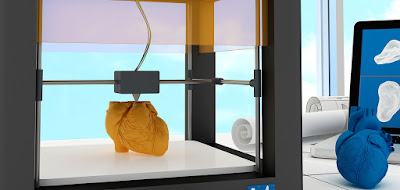Increasing prevalence of NCDs and chronic diseases, and growth in
healthcare awareness in the country has positively driven the retail pharmacy
market in Kuwait.
The report titled, “Kuwait Retail Pharmacy Market Outlook to 2022 - By
Type of Pharmacy (Pharmacy Chains, Independent Pharmacies and Hospital/Clinic
Based Pharmacies); By Type of Drugs (Cosmetics, Food Supplements and Drugs),
and By Type of Sales Channels (Offline and Online)” by Ken Research believe that the increase in number of
pharmacists and opening up of new specialty hospitals in the country will drive
growth in Kuwait Retail Pharmacy Market in the future.
Surge in Demand of
Private Label Goods: Introduction
of first five year plan namely Kuwait National Programme for healthy living
(2013-2017) has motivated the people to perform daily exercise which augmented
the demand of health supplements among people to stay fit. Moreover, in 2017,
private label goods contributed a major dominating share in terms of revenue generation majorly
due to Kuwait has high expatriate population and majority of the expat
population is health conscious which led to an increase in the demand of
medicinal cosmetic from a retail pharmacy.
Increase in Number
of Pharmacists: In Kuwait, number of pharmacists has
increased positively during the period 2012-2016 at a CAGR of 8.2% and total
number of pharmacists reached 1,462 in the year 2016. Increase in number of
pharmacists in Kuwait is directly influencing the market of retail pharmacy as
growth in number of pharmacists will lead to opening up of more number of
retail pharmacy stores or outlets in the country.
Introduction of
Pharmacy Mobile Application: Pharmacy
companies launched – “Pharmacy applications” in the market to provide access to
pharmaceutical products and in addition to this it provided information about
the offers and services. For instance- “Al- Dawaa”, a mobile application was
launched by Al-Dawa Medical Services in the year 2014. Furthermore, such mobile
application helped the companies to increase market penetration and expand
their market outreach.
Shift towards Online
Distribution of Drugs: The majority of the Kuwaiti
population is between the age group of 25 years to 54 years, which has resulted
in an increase in the
use of social media and growing internet penetration in the country. In order
to compete with the dynamic retail pharmacies, stores have slowly began to shift
towards online distribution of drugs along with the other health care products
such as (food supplements, vitamins, cosmetics and others).
Keywords:-
Kuwait Retail Pharmacy Market
Drugs Sales Kuwait
Kuwait Pharmacy Chain Market
Hospital Pharmacies Kuwait
Clinics Pharmacies Kuwait
Food Supplement Kuwait
Cosmetics Market Kuwait
Kuwait Retail Pharmacy Growth
Online Retail Pharmacy Kuwait
Retail Pharmacy Kuwait
Kuwait Drug Stores
Kuwait Health Care
Pharmacy Revenue Kuwait
Kuwait Pharmacies Number
Kuwait Pharmacy Chain Number
Kuwait Retail Pharmacy Trends
Trends Pharmacy Kuwait
Kuwait Pharmacy Issues
Key Segments Covered:-
Market Segmentation:-
By Type
of Pharmacy (Pharmacy Chains, Independent Pharmacies and Hospital/Clinic Based
Pharmacies)
By Type
of Drugs (Cosmetics, Food Supplements and Drugs)
By
Revenue Split (KD 500 to KD 2,000, KD 2,000 to KD 4,000 and KD 5,000 to KD
10,000)
By Type
of Sales Channels (Offline and Online)
Key Target Audience:-
Hospitals
Pharmaceutical
Manufacturers
Pharmaceutical
Distributors
Pharmacy
Chains
Health
Care Associations
Time Period Captured in the Report:-
Historical Period – 2012-2017
Forecast Period – 2018-2022
Companies Covered:-
Royal
Pharmacy
Pharmazone
YIACO
Ali-Abdulwahab
Al-Mutawa
Boots
Pharmacy
Al-Hajery
Aster
Dowa
PharmaTee
For more information on the research report, refer to below
link:-
Related Reports:-
Contact
Us:Ken Research
Ankur Gupta, Head Marketing & Communications
Sales@kenresearch.com
+91-9015378249







